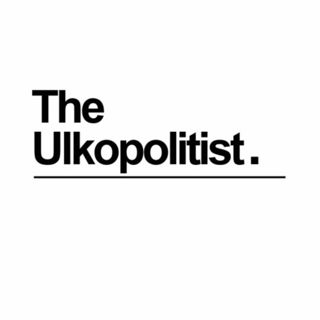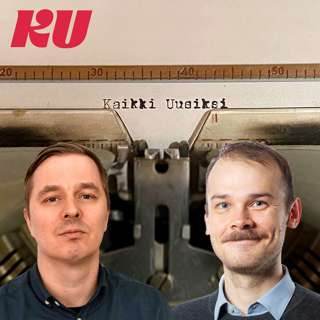
Fashion Industry Faces Turbulent 2025: Rising Inflation, Sustainability Demands, and Global Shifts
The global fashion industry is entering 2025 with a particularly tumultuous and uncertain outlook. According to the latest BoF-McKinsey State of Fashion Executive Survey, 80% of executives expect no improvement in the industry, with 39% anticipating worsening conditions[1][3][5].The industry's revenue growth is expected to stabilize in the low single digits, a continuation of the sluggishness seen in 2024. This is largely due to consumers becoming increasingly price sensitive following a period of high inflation. The long-feared cyclical slowdown has arrived, and regional differences will become even starker in the coming year[1][3][5].One of the key shifts in consumer behavior is the rise of "dupes," or affordable alternatives to luxury brands. This trend, combined with the acceleration of climate change and the reshuffling of global trade, means that fashion brands must navigate a complex maze of challenges to find pockets of growth[3][5].In response to these challenges, fashion leaders are diversifying their sourcing footprint in Asia, particularly in countries other than China. India is expected to be a focus for high-street players, while Japan's luxury boom is expected to continue into 2025[1][5].Supply chain developments are also a key area of focus. Retailers are accelerating their reconfiguration of supply chains to prioritize nearshoring and manufacturing in geopolitically-aligned countries. This is driven by the need to reduce excess inventory and minimize the risk of shortfalls[1][3].Regulatory changes are also impacting the industry. Governments around the world are increasing pressure on fashion brands to reduce emissions and fashion waste. This is driving advances in inventory management, with new technology aiding these efforts[1][3].In terms of market movements, the luxury segment is expected to show more resilience than other categories. However, even luxury brands are not immune to the challenges facing the industry. The McKinsey Global Fashion Index forecasts that non-luxury will drive the entirety of the increase in economic profit for the first time since 2010[3][5].Overall, the fashion industry is facing a time of reckoning in 2025. Brands must be agile and adaptable to navigate the complex challenges ahead. By diversifying their sourcing footprint, investing in new technology, and prioritizing sustainability, fashion leaders can find pockets of growth in a tumultuous market.Key statistics:- 80% of executives expect no improvement in the global fashion industry in 2025[5].- 39% of executives anticipate worsening conditions in 2025[1][3][5].- Revenue growth is expected to stabilize in the low single digits in 2025[1][3][5].- Non-luxury is expected to drive the entirety of the increase in economic profit for the first time since 2010[3][5].This content was created in partnership and with the help of Artificial Intelligence AI
13 Tammi 3min

Navigating the Fashion Industry's Transformative Year: Challenges, Trends, and Strategies for Success in 2025
The global fashion industry is poised for a transformative yet challenging year in 2025, marked by economic uncertainty, shifting consumer behaviors, and the need to embrace sustainability while navigating complex global trade dynamics.According to the McKinsey & Company’s State of Fashion 2025 report, the industry faces a long-feared cyclical slowdown, with revenue growth expected to stabilize in the low single digits. This sluggish growth is a continuation of the trends seen in 2024, reflecting economic deceleration and muted consumer confidence[1][3][5].Key markets such as the United States and Europe are experiencing slow growth, while China’s performance has decelerated significantly. High-net-worth individuals in the US are supporting steady growth, but middle- and lower-income segments are facing challenges[1][3].Consumer behavior is shifting, with increased price sensitivity due to recent high inflation. The rise of "dupes" and the acceleration of climate change are also influencing consumer preferences. Regional differences are becoming starker, with Europe benefiting from falling inflation and increased tourism, while the US and China face economic uncertainties[1][3][5].To navigate these challenges, fashion industry stakeholders are advised to diversify sourcing beyond China, enhance sustainability through renewable energy and circular production models, leverage AI and technology for product discovery and supply chain optimization, and target overlooked demographics such as the "Silver Spenders"[1][5].Supply chain developments are also critical, with retailers accelerating the reconfiguration of supply chains to prioritize nearshoring and manufacturing in geopolitically-aligned countries. This includes efforts to reduce excess inventory and minimize the risk of shortfalls[3][5].The climate crisis remains a potent force across fashion supply chains and in driving consumer behavior. Leading companies are bolstering their resilience to climate impacts, recognizing that inaction is no longer an option. Extreme climate events are already placing the lives and livelihoods of fashion workers in danger and could put at risk an estimated $65 billion of apparel exports by 2030[2][5].In summary, the fashion industry in 2025 is characterized by economic uncertainty, shifting consumer behaviors, and the need for sustainability and supply chain resilience. Industry leaders are responding by diversifying sourcing, enhancing sustainability, leveraging technology, and targeting new demographics. The current conditions are more challenging than the previous reporting period, with a significant shift in profit drivers from luxury to non-luxury segments. The industry must navigate these complex challenges to find pockets of growth and ensure long-term success.This content was created in partnership and with the help of Artificial Intelligence AI
12 Tammi 3min

Fashion's Uncertain Future: Navigating the Challenges of 2025
The current state of the fashion industry is marked by significant challenges and uncertainties. According to the latest report by McKinsey & Company, "The State of Fashion 2025," the industry is facing a particularly tumultuous and uncertain year ahead. The long-feared cyclical slowdown has arrived, with consumers, affected by recent high inflation, becoming increasingly price-sensitive[1][3].Key statistics from the report highlight the pessimistic outlook among fashion executives. Only 20% expect improvements in consumer sentiment in 2025, while 39% see industry conditions worsening. This is a continuation of the sluggish growth seen in 2024, with revenue growth expected to stabilize in the low single digits[1][3].The industry is experiencing significant shifts in consumer behavior, with a growing focus on value-for-money perception. This is driving growth in segments such as resale, off-price, and dupes. The rise of dupes, in particular, is a surprising trend that is expected to continue in 2025[3].Regional differences are becoming starker, with Asia emerging as a critical market. China's economic deceleration and changing consumer preferences are making growth challenging, leading international fashion brands to look to other Asian markets like India and Japan[3].The sportswear industry is outperforming the wider fashion market, with sportswear becoming an important part of fashion and growing faster than the fashion market for the first time[5].In response to these challenges, fashion industry leaders are focusing on diversifying their sourcing footprint in Asia and laying the foundations for nearshoring. They are also looking to engage the "Silver Generation" aged over 50, which represents a growing population with a high share of global spend[3].Compared to the previous reporting period, the industry's outlook has become more pessimistic. In 2023, 84% of industry leaders expected market conditions to decline or stay the same, while in 2025, this number has increased to 80% expecting no improvement[2][3].In conclusion, the fashion industry is facing significant challenges in 2025, driven by economic uncertainty, geographic disparities, and shifting customer behavior. Industry leaders must navigate these challenges by identifying bright spots, whether geographic, demographic, or technological, and evolving their strategies to capture growth in a rapidly changing market.This content was created in partnership and with the help of Artificial Intelligence AI
8 Tammi 2min

Fashion in 2025: Navigating Challenges and Pockets of Growth
The fashion industry is entering 2025 with a mix of challenges and opportunities. According to the latest BoF-McKinsey State of Fashion Executive Survey, only 20% of fashion leaders expect improvements in consumer sentiment this year, while 39% anticipate worsening industry conditions[1][4]. This pessimism is largely driven by the ongoing cyclical slowdown, high inflation, and increasing price sensitivity among consumers.Despite these challenges, there are areas of growth and innovation. The luxury segment is expected to remain resilient, with sales projected to grow 5-10% in 2025[4]. Additionally, new partnerships and collaborations are emerging, such as the highly anticipated reunion of Takashi Murakami and Louis Vuitton, and Willy Chavarria's collaboration with Adidas Originals[2]. These partnerships not only generate buzz but also reflect a shift towards mixing expertise and innovating on familiar concepts to intrigue consumers worldwide.Supply chain developments are also a key focus for 2025. Retailers are accelerating their reconfiguration of supply chains to prioritize nearshoring and manufacturing in geopolitically-aligned countries. This shift aims to reduce excess inventory and minimize the risk of shortfalls, driven by margin pressures and regulatory demands to reduce emissions and fashion waste[1][4].Consumer behavior is also undergoing significant changes. The rise of "dupes" and increasing price sensitivity are forcing brands to adapt their strategies. High-net-worth individuals in the United States and new growth engines in Asia are expected to drive demand, while falling inflation and increased tourism in Europe may offer some relief[1][4].In response to these challenges, industry leaders are focusing on agility and innovation. ANDMORE's Apparel Markets are introducing new initiatives in 2025, including education programs, enhanced buyer resources, and community-focused events to empower retailers and exhibitors[5]. These efforts aim to foster stronger community connections and provide fresh ways to experience markets.Comparing current conditions to the previous reporting period, the industry's outlook for 2025 appears to be a continuation of the sluggishness seen in 2024, with revenue growth expected to stabilize in the low single digits[1][4]. However, the luxury segment's resilience and the emergence of new partnerships and supply chain strategies offer pockets of growth and innovation. As the industry navigates these challenges, adaptability and innovation will be crucial for brands to seize opportunities and thrive in 2025.This content was created in partnership and with the help of Artificial Intelligence AI
6 Tammi 3min

Fashion's 2025 Crossroads: Navigating Economic Shifts, Sustainability and Emerging Opportunities
The global fashion industry is poised for a transformative year in 2025, marked by a blend of opportunities and challenges. According to McKinsey & Company's State of Fashion 2025 report, the industry faces economic headwinds, shifting consumer behaviors, and the need to embrace sustainability while navigating complex global trade dynamics.Economic growth in the fashion industry is expected to be sluggish in 2025, with revenue growth stabilizing in the low single digits. This reflects economic deceleration and muted consumer confidence, particularly in markets like China and the United States. However, falling inflation and recovering tourism in Europe are seen as bright spots[1][4].Consumer behavior is also undergoing significant shifts. High inflation has made consumers increasingly price-sensitive, and there is a growing demand for sustainable and environmentally-friendly products. The report notes that 39% of fashion executives expect industry conditions to worsen in 2025, while only 20% anticipate improvements in consumer sentiment[4].In response to these challenges, fashion industry leaders are focusing on reconfiguring supply chains to prioritize nearshoring and manufacturing in geopolitically-aligned countries. This includes efforts to reduce excess inventory and minimize the risk of shortfalls. Advances in inventory management and new technology will also play a crucial role in addressing margin pressures and reducing emissions and fashion waste[4].Despite these challenges, there are also opportunities for growth and innovation in the fashion industry. Recent collaborations and partnerships, such as Takashi Murakami x Louis Vuitton and Willy Chavarria x Adidas, are generating significant interest and driving demand for unique and high-end fashion products[2].ANDMORE's Apparel Markets are also introducing new initiatives in 2025, focused on education, enhanced buyer resources, and fostering stronger community connections. These programs aim to empower retailers and exhibitors with tools to succeed and provide fresh ways to experience markets[5].In comparison to the previous reporting period, the fashion industry's outlook for 2025 appears to be a continuation of the sluggishness seen in 2024. However, there are still opportunities for growth and innovation, particularly in areas such as sustainability and digital transformation.Key statistics and data from the past week include:- The global fashion industry is expected to grow at a low single-digit rate in 2025[1][4].- 39% of fashion executives expect industry conditions to worsen in 2025, while only 20% anticipate improvements in consumer sentiment[4].- Falling inflation and recovering tourism in Europe are seen as bright spots for the industry[1][4].- The climate crisis will remain a potent force across fashion supply chains and in driving consumer behavior[4].Overall, the fashion industry in 2025 will require navigating a complex landscape of economic uncertainty, shifting consumer behaviors, and regulatory pressures. However, with a focus on innovation, sustainability, and strategic partnerships, there are still opportunities for growth and success in this challenging environment.This content was created in partnership and with the help of Artificial Intelligence AI
5 Tammi 3min

"Fashion's Future: Navigating Uncertainty and Embracing Innovation"
The current state of the fashion industry is marked by uncertainty and challenges, as highlighted in the recent BoF-McKinsey State of Fashion Executive Survey. The industry is expected to face a tumultuous 2025, with only 20% of executives predicting improved consumer sentiment and 39% expecting worse industry conditions[1][4].The fashion industry's revenue growth is expected to stabilize in the low single digits, a continuation of the sluggishness seen in 2024. Consumers, affected by the recent period of high inflation, are increasingly price sensitive, leading to a shift towards value-for-money segments like resale and dupes[1][4].Geographic disparities are also evident, with Asia emerging as a growth hotspot. India, Japan, and Korea are seen as new stars in the APAC region, with 63% of executives viewing mature APAC markets as growth hotspots in 2025[4].In response to these challenges, fashion industry leaders are focusing on reconfiguring supply chains to prioritize nearshoring and manufacturing in geopolitically-aligned countries. Companies are also making efforts to reduce excess inventory and minimize the risk of shortfalls, driven by margin pressures and pressures from governments to reduce emissions and fashion waste[1].The integration of technology into fashion is also gaining traction, with the global smart clothing market expected to reach $5.3 billion by 2024. Brands such as Levi's and Google are exploring innovations like temperature-regulating fabrics, augmented reality capabilities, and interactive designs[5].ANDMORE, a leading apparel market platform, is introducing new initiatives in 2025 focused on education, enhanced buyer resources, and fostering stronger community connections. These initiatives include Market Insiders, New Buyer Meet & Greet, and Taste of Atlanta, designed to share market expertise, foster connection, and encourage exploration around the city[2].In comparison to the previous reporting period, the industry's outlook has become more pessimistic. The 2023 report highlighted the industry's strong performance in 2021 and the first half of 2022, but noted that deteriorating macroeconomic and geopolitical conditions would weigh heavily on the industry in the second half of 2022 and 2023[3].Overall, the fashion industry is navigating a complex and challenging landscape in 2025. To succeed, companies must be agile, innovative, and responsive to shifting consumer behavior and preferences. By prioritizing sustainability, technology, and community connection, fashion industry leaders can position themselves for growth and success in the years ahead.This content was created in partnership and with the help of Artificial Intelligence AI
3 Tammi 3min

Fashion Industry Faces Slow Growth, Sustainability Demands in Uncertain Economic Climate
The current state of the fashion industry is marked by uncertainty and challenges, as highlighted in the latest reports from the Business of Fashion and McKinsey. The industry is expected to achieve year-on-year retail sales growth of between 2 percent and 4 percent in 2024, a slower pace compared to previous years[1][5].Consumer confidence remains fragile, particularly in key markets such as the US, Europe, and China, due to ongoing economic and geopolitical challenges. The climate crisis has also become a significant pressure point, with extreme weather events in 2023 emphasizing the need for the industry to build resilience into its supply chains and reduce emissions[1].In response to these challenges, fashion companies are focusing on growing sales through new pricing and promotion strategies rather than volume increases. The industry is expected to bear the impact of fluctuations in demand, leading to a "bullwhip effect" in supply chains, causing factory underutilization, layoffs, and delayed infrastructure investments[1].The luxury segment is expected to generate the biggest share of economic profit, with global growth forecast at 3 to 5 percent, compared to 5 to 7 percent in 2023. However, even within luxury, companies will face challenges due to the tough economic environment[5].Regional differences are pronounced, with European growth expected to slow to 1 to 3 percent, while US growth is expected to pick up after a relatively weak 2023. China is expected to see growth of 4 to 6 percent, a slight uptick from the end of 2023 but slow on a historical basis[5].To navigate these challenges, fashion brands are investing in developing more transparent and collaborative relationships with their suppliers. Vertical integration has emerged as a vital strategy for garment manufacturers, enhancing control over production and reducing lead times[3].Sustainability demands are also becoming standard business concerns, with the need for rapid production and transparency intensifying. The industry is expected to see significant technological advancements, with robots potentially replacing traditional labor roles and data guiding business decisions[3].In conclusion, the fashion industry is facing a challenging period, with slow growth, fragile consumer confidence, and significant environmental pressures. However, by focusing on sustainability, vertical integration, and collaborative supply chain relationships, industry leaders are responding to these challenges and positioning themselves for success in the year ahead.This content was created in partnership and with the help of Artificial Intelligence AI
29 Joulu 20242min





















